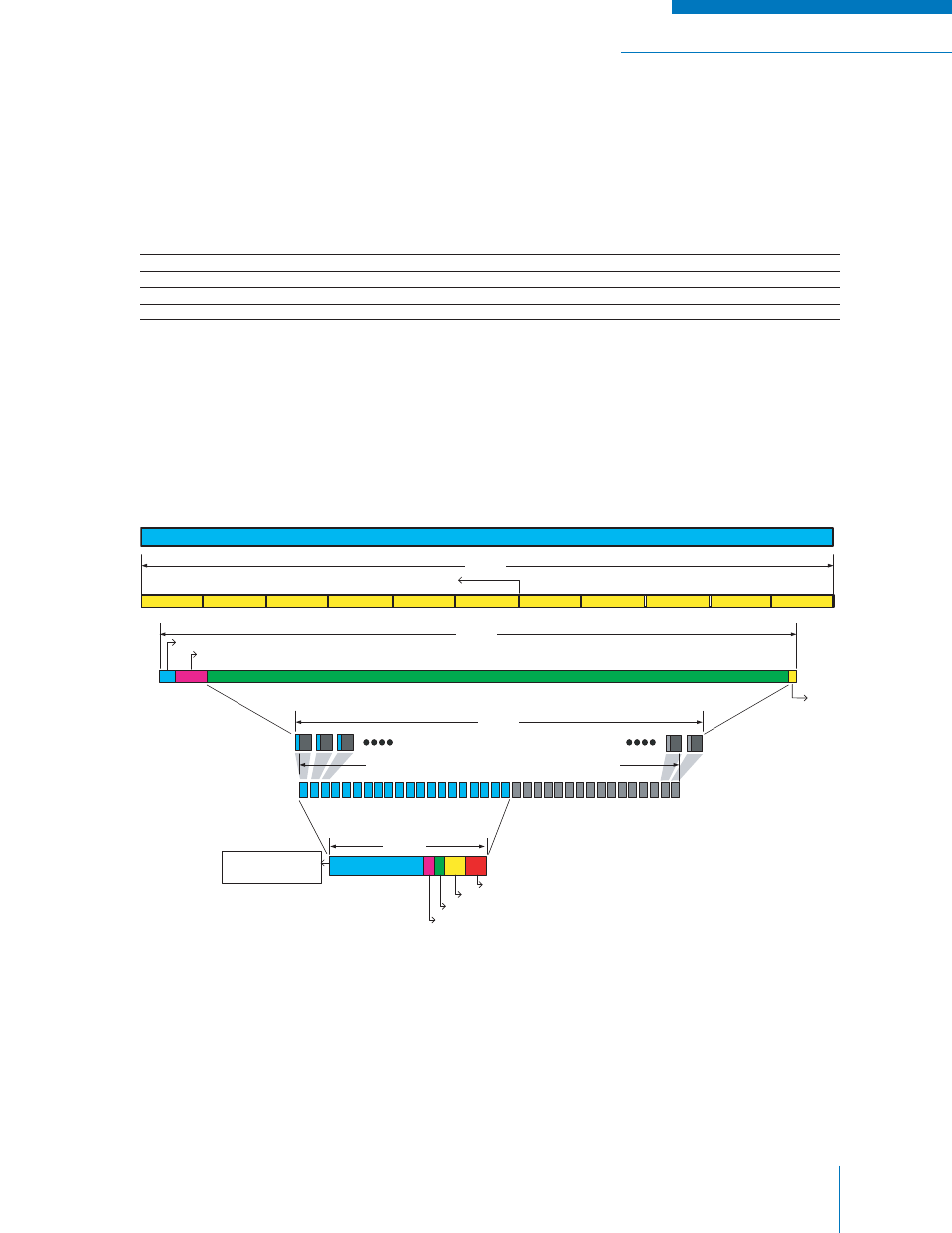Status symbols, Header data unit – Codan Radio P25 Training Guide User Manual
Page 59

P25 RADIO SYSTEMS | TRAINING GUIDE
Chapter 4: Anatomy of the Common Air Interface Page 51
STATUS SYMBOLS
Throughout all of the data units (Header Data Unit, Logical Link Data Unit 1, Logical Link Data Unit 2,
Packet Data Unit and Terminator Data Unit) the 2 bit status symbols are interleaved so that there is one
status symbol for every 70 bits of information.
Status Symbol
Meaning
Usage
01
Inbound Channel is Busy
Repeater
00
Unknown, use for talk-around
Subscriber
10
Unknown, use for inbound or outbound
Repeater or Subscriber
11
Inbound Channel is Idle
Repeater
HEADER DATA UNIT
A diagram of the header data unit is given in Figure 4-4. The Header Data Unit is composed of the FS
(48 bits), NID (64 bits), and the header code word (648 bits). Ten null bits are added to the end of
the header code word resulting in 770 bits. Eleven status symbols are also interleaved throughout the
Header Data Unit yielding 792 bits total. The Header Data Unit takes 82.5 ms to transmit at 9.6 kbps
(the standard bit rate of the P25 CAI).
Figure 4-4: Header Data Unit
The Header Code Word fi eld includes a Message Indicator (MI), and Algorithm ID (ALGID) for the
encryption algorithm, and the Key ID (KID) for the encryption key as well as the Manufacturer’s ID
(MFID) and Talk-group ID (TGID). These information fi elds total 120 bits.
The information fi elds are separated into 20 symbols of 6 bits each (these are called hex bits). The
symbols or hex bits are encoded with a (36,20,17) Reed-Solomon code to yield 36 hex bits. The 36 hex
bits are then encoded with a (18,6,8) shortened Golay code to yield 648 bits total.
Header Code Word 648 bits
NID 63 bits+1Parity bit
FS 48 bits
Null
10 bits
36X6=216 [(36,20,17) RS code adds 16 hex bits
MFID
8 bits
ALGID
8 bits
KID
16 bits
TGID
16 bits
120 bits
MI 72 bits
648 bits
770 bits
Status Symbol Each 2 bits for Every 70 Bits 11 X 2 = 22 Bits
Initialization vector for
encryption algorithm
Header Data Unit
792 bits
form into 20 hex bits
Each encode with (18,6,8) shortened Golay
